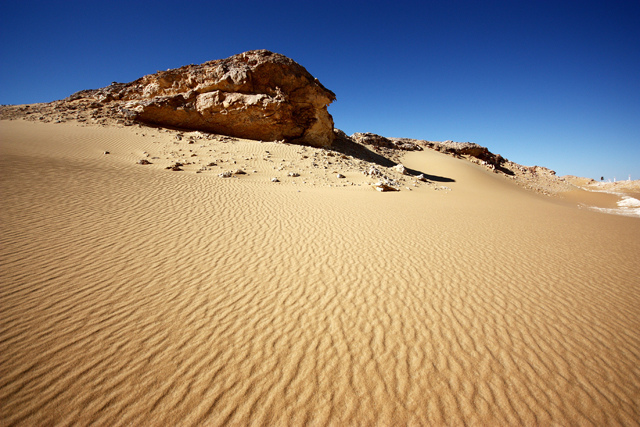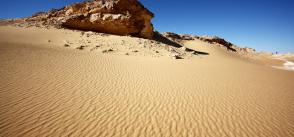
Quenching the Thirst for Water in Egypt's Western Desert
The oases of the Western Desert depend on a sole water source for their survival: the Nubian Sandstone Aquifer. However, the aquifer contains fossil water that is finite and one day it will run dry. En route to the White Desert, a small stone building is hoping to have a big impact and change the course before it’s too late.
The Water Education Center of El Heiz Oasis was established to convey knowledge about water, and to promote water conservation.
The threat of global draught, conflict among Nile Basin countries over their shared river, pollution—from factories that dump their waste water into the Nile to the sewage system—and a fast-growing population are all threats to Egypt’s water supply. Yet, the country’s people continue to remain unaware or ignore such an immense problem.
Located 40 km south of Bahariya Oasis and 400 km southwest of Cairo, the center was established in 2016 by the Research Institute for a Sustainable Environment (RISE) of the American University in Cairo (AUC), with funding from HSBC. Established in an agricultural village, it is a space designed to educate farmers, engineers, professionals, youth and teachers about effective ways of reducing water consumption and reusing it to produce food. It will serve as a center for water management, education and innovation.
Read the full article by Aya Nader via Because magazine.
[Photo by Alfie Ianni | Flickr]







